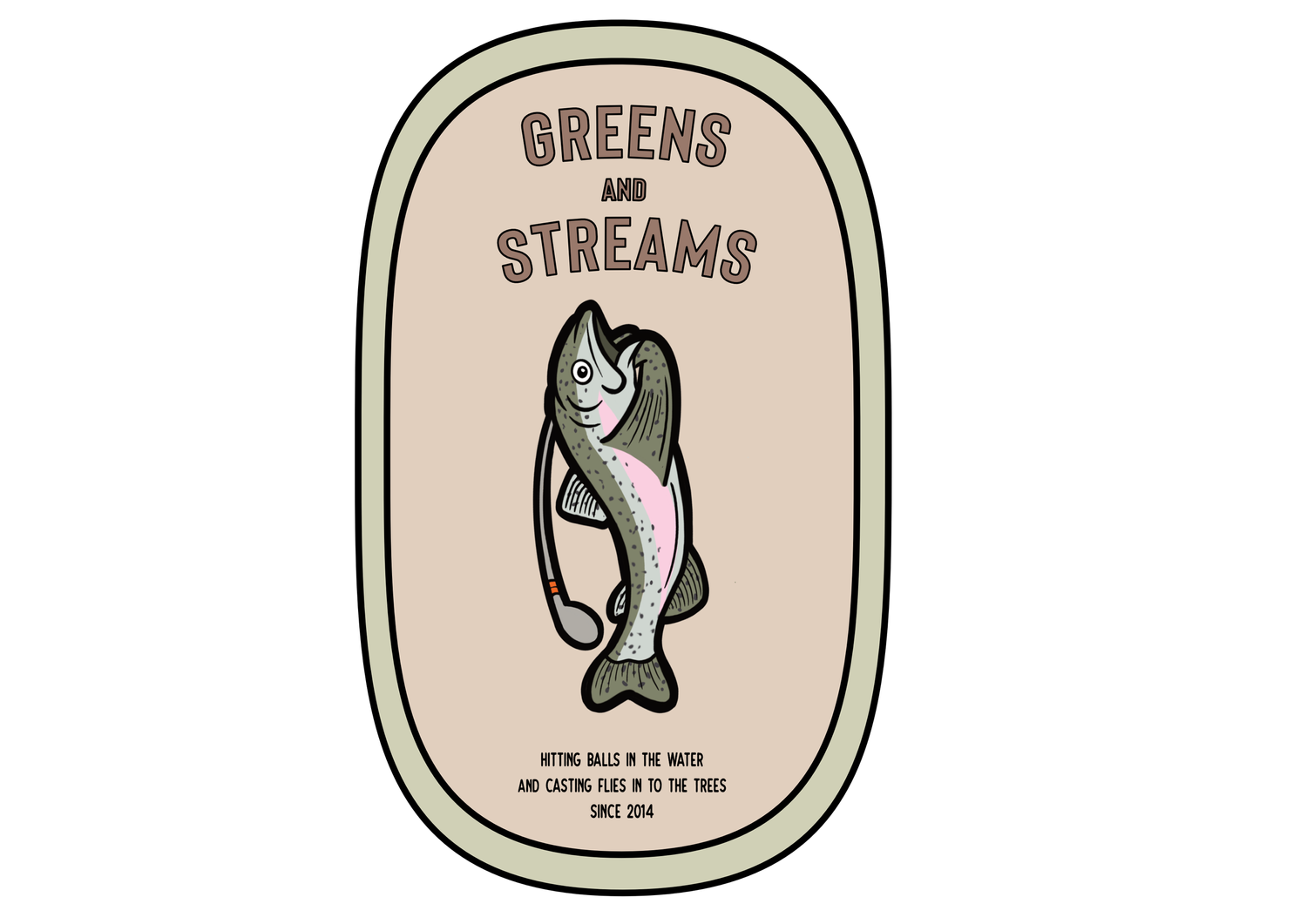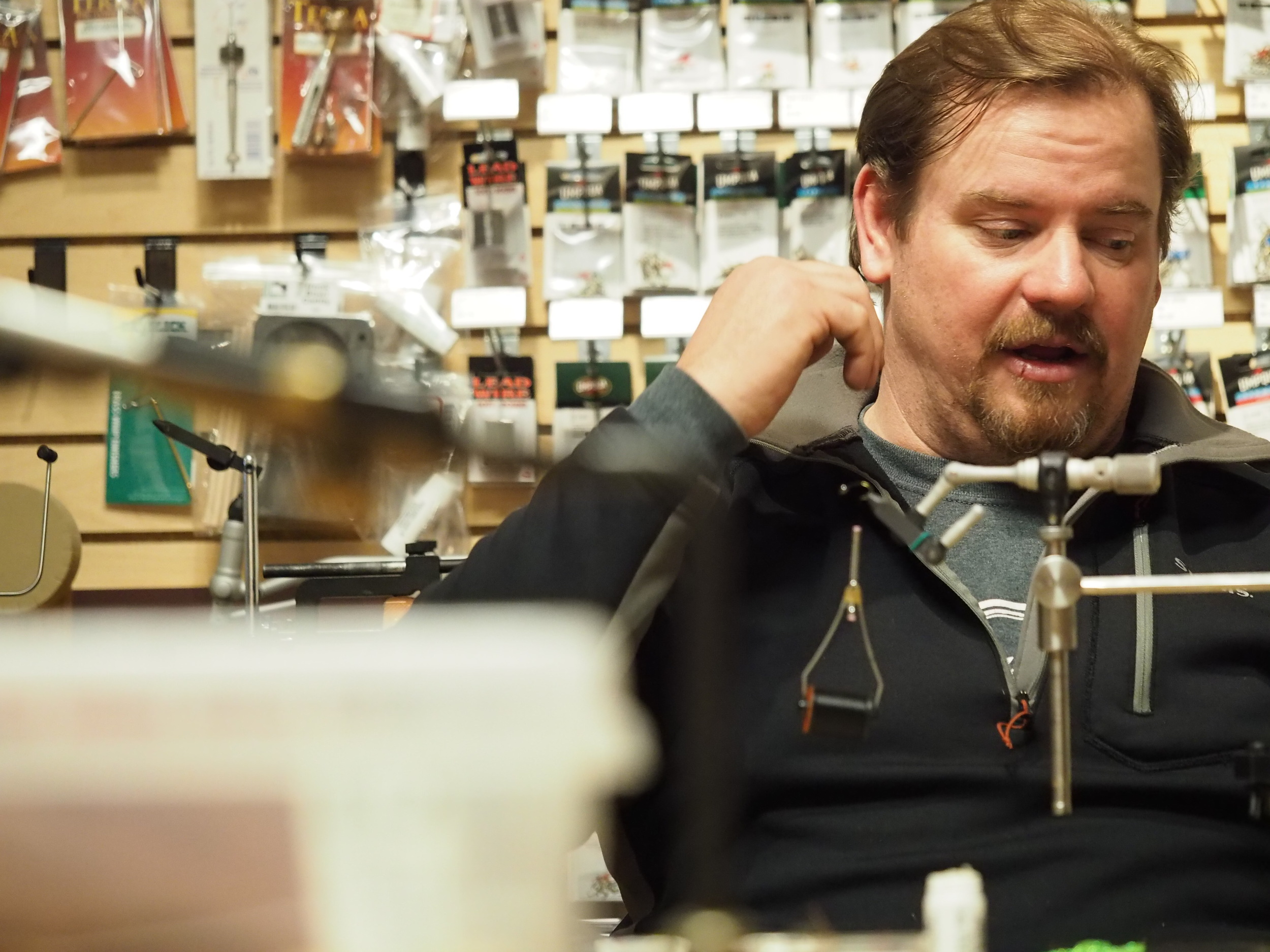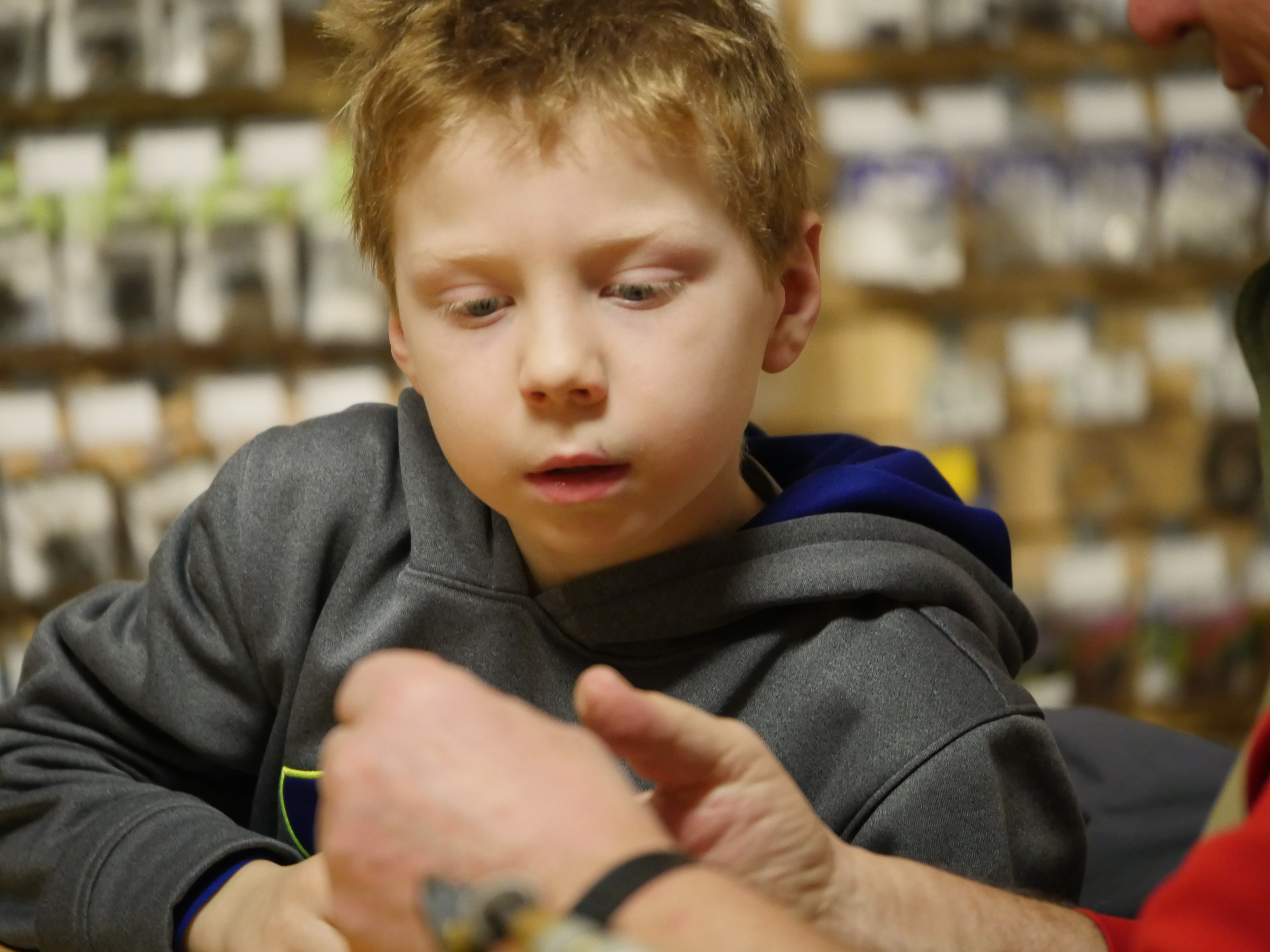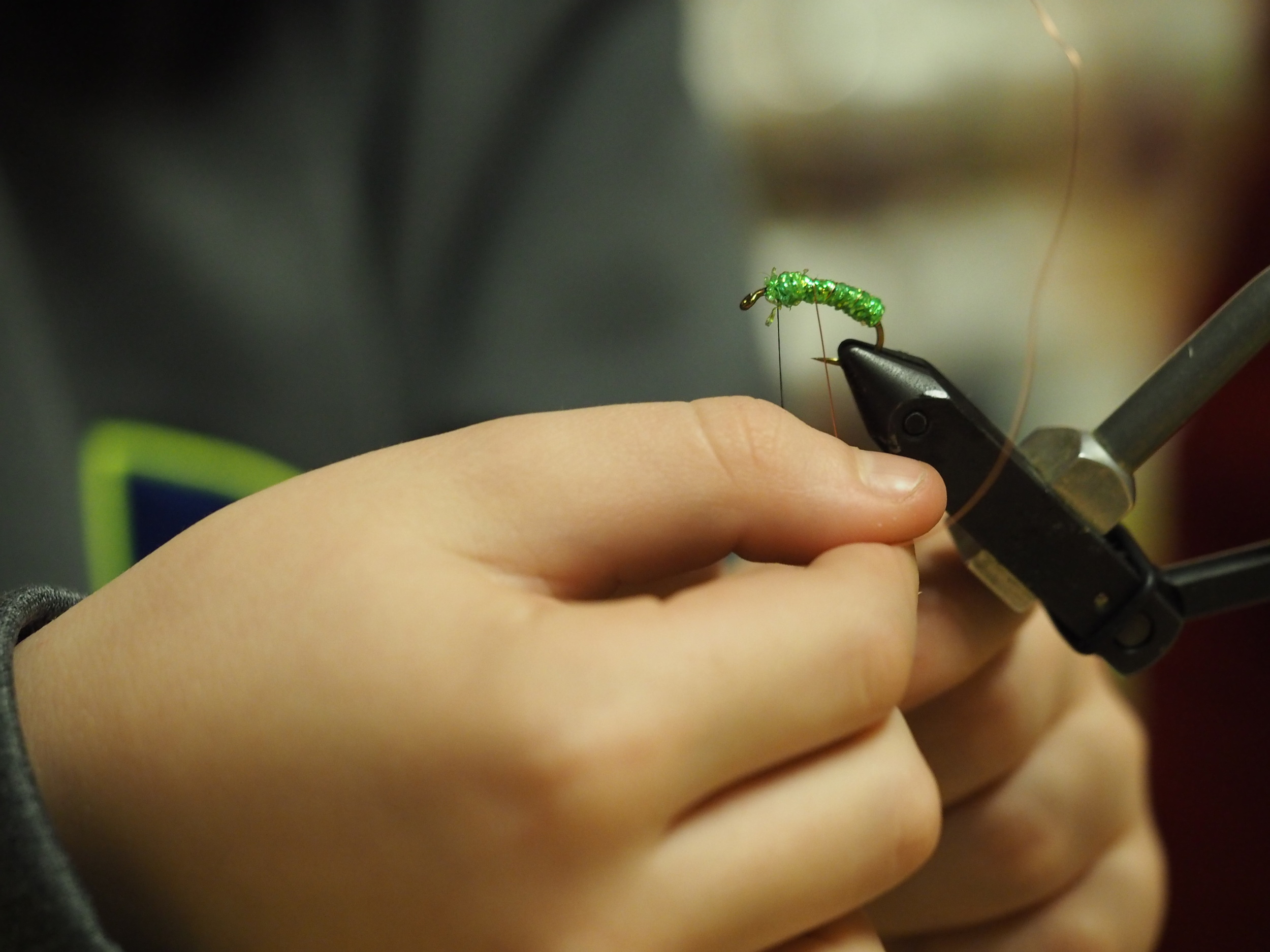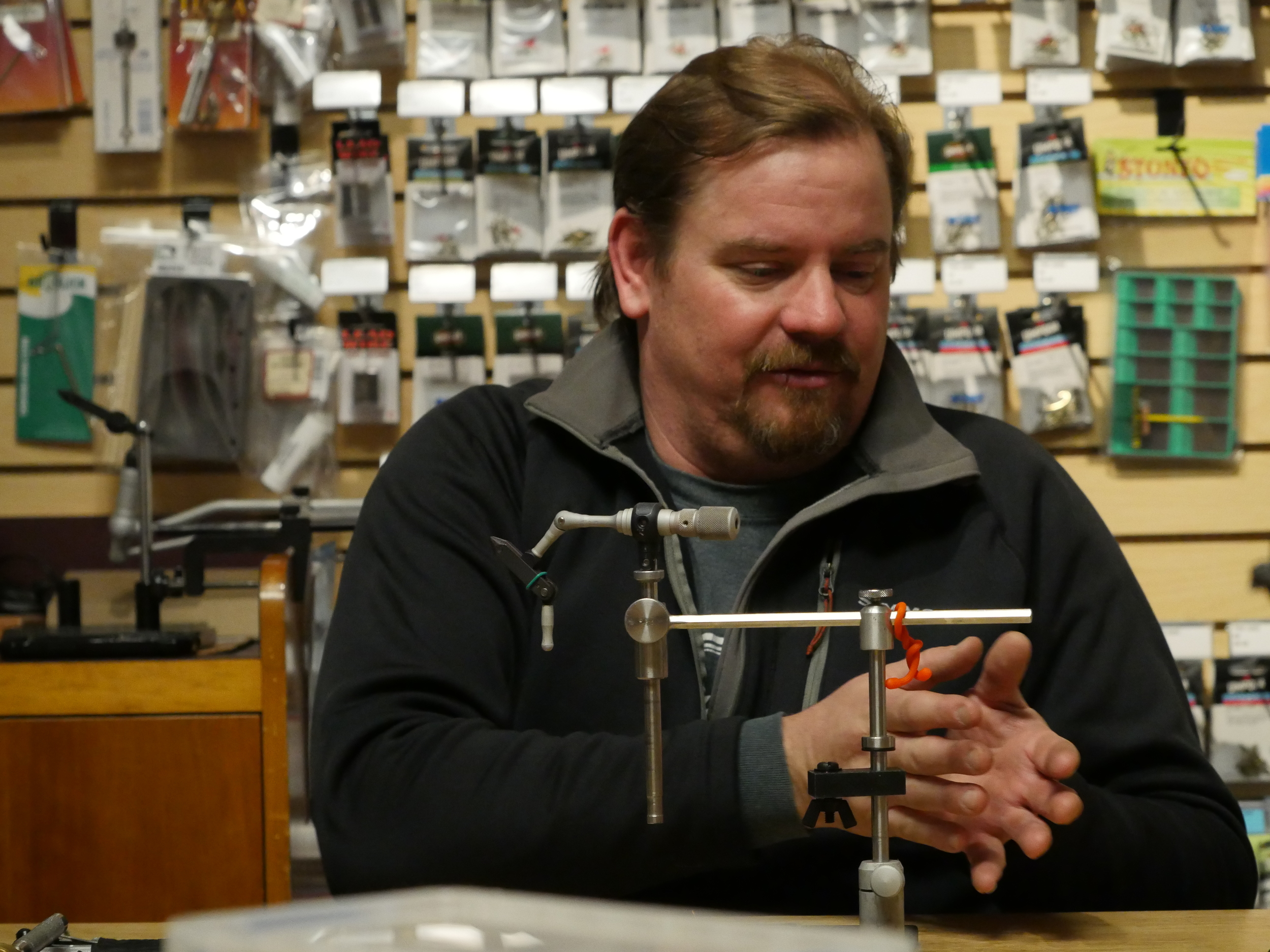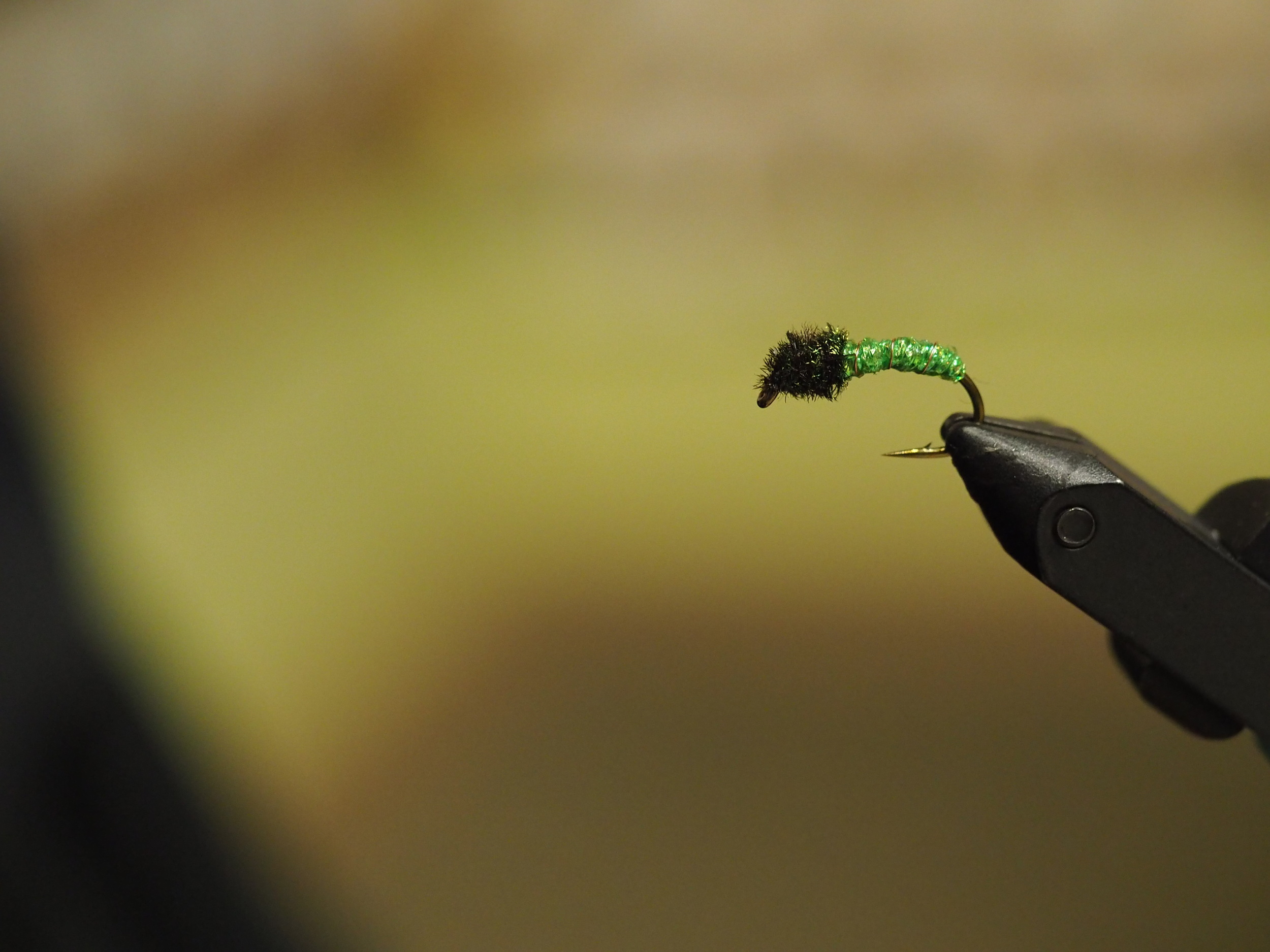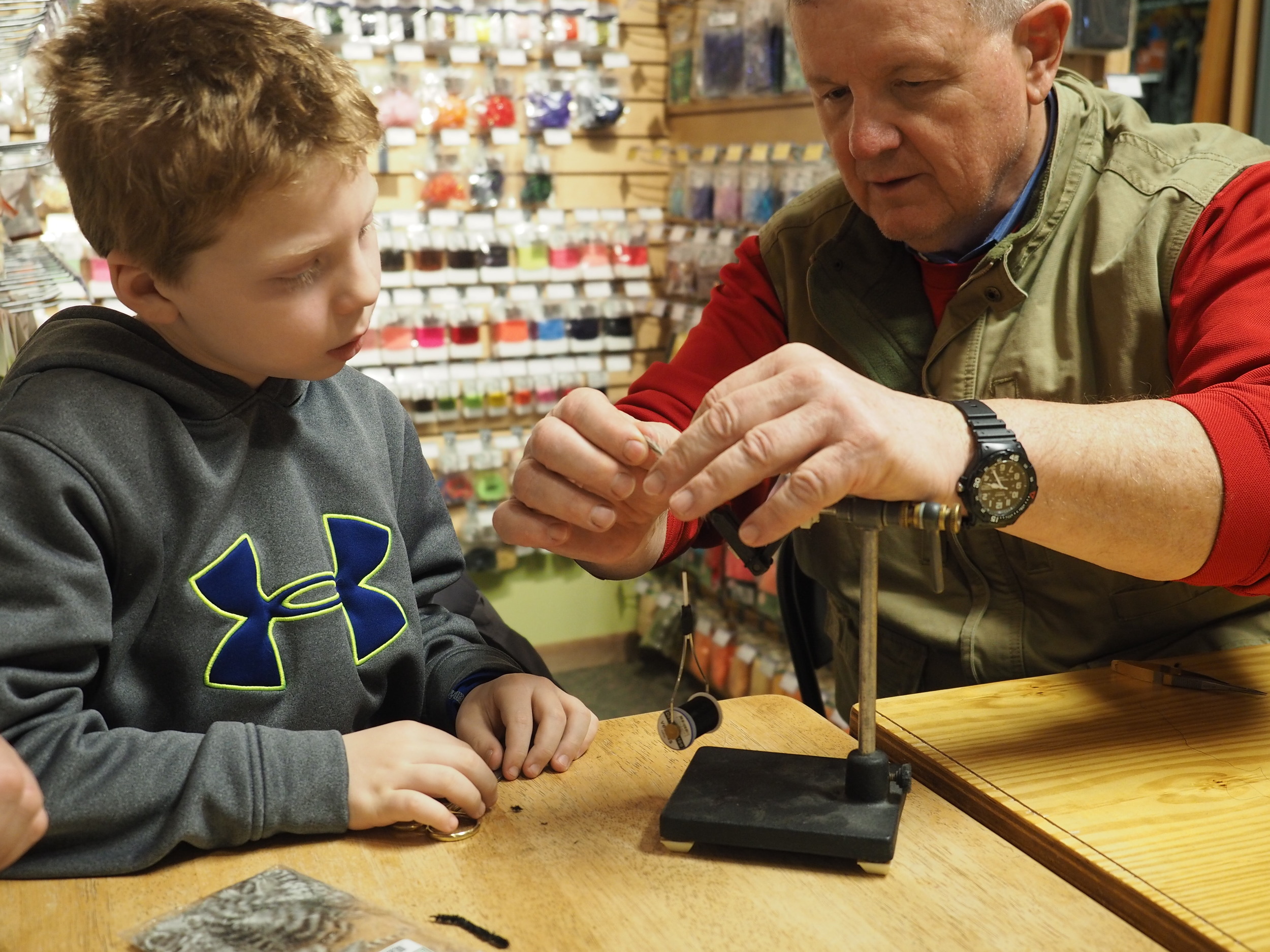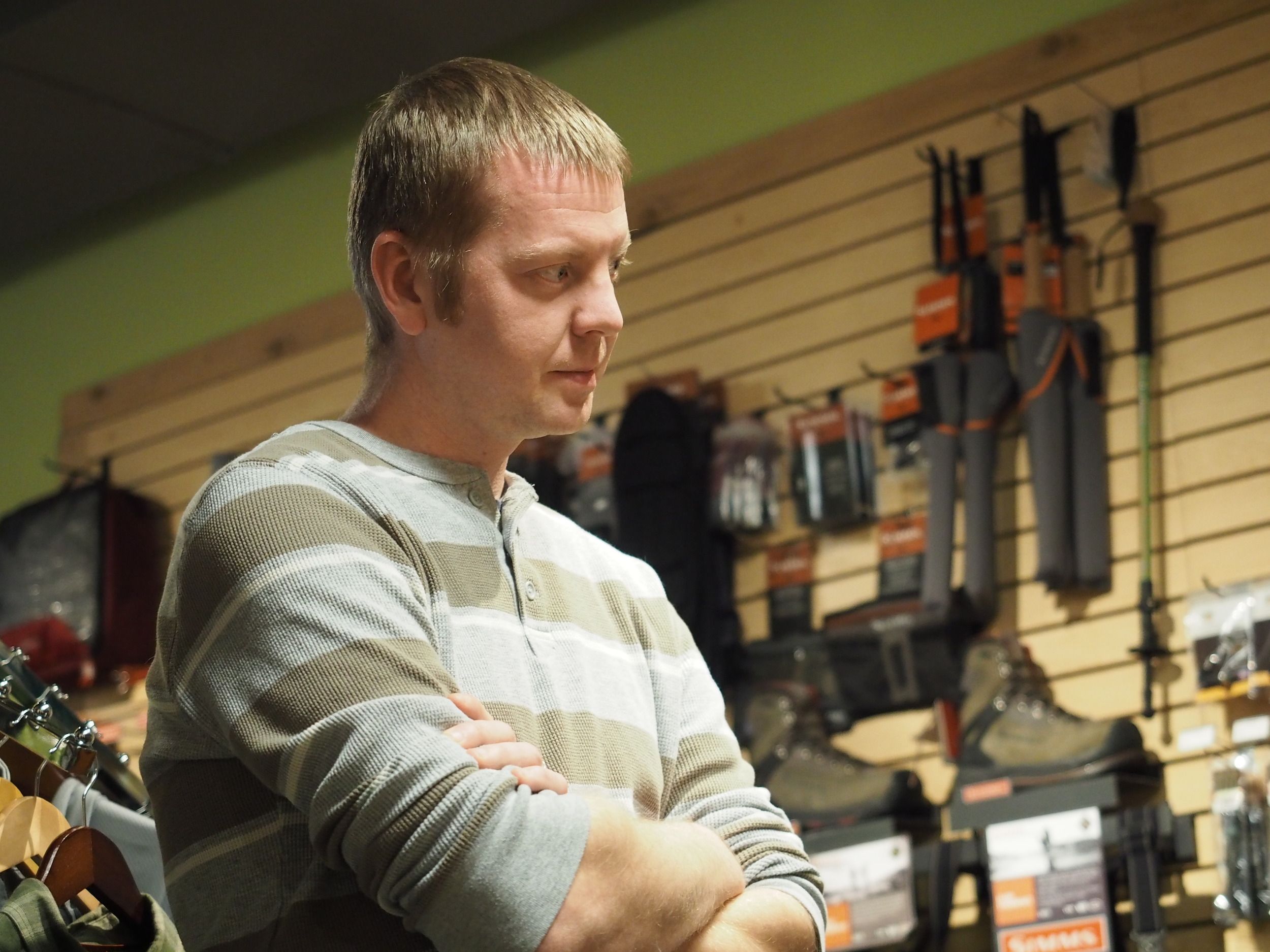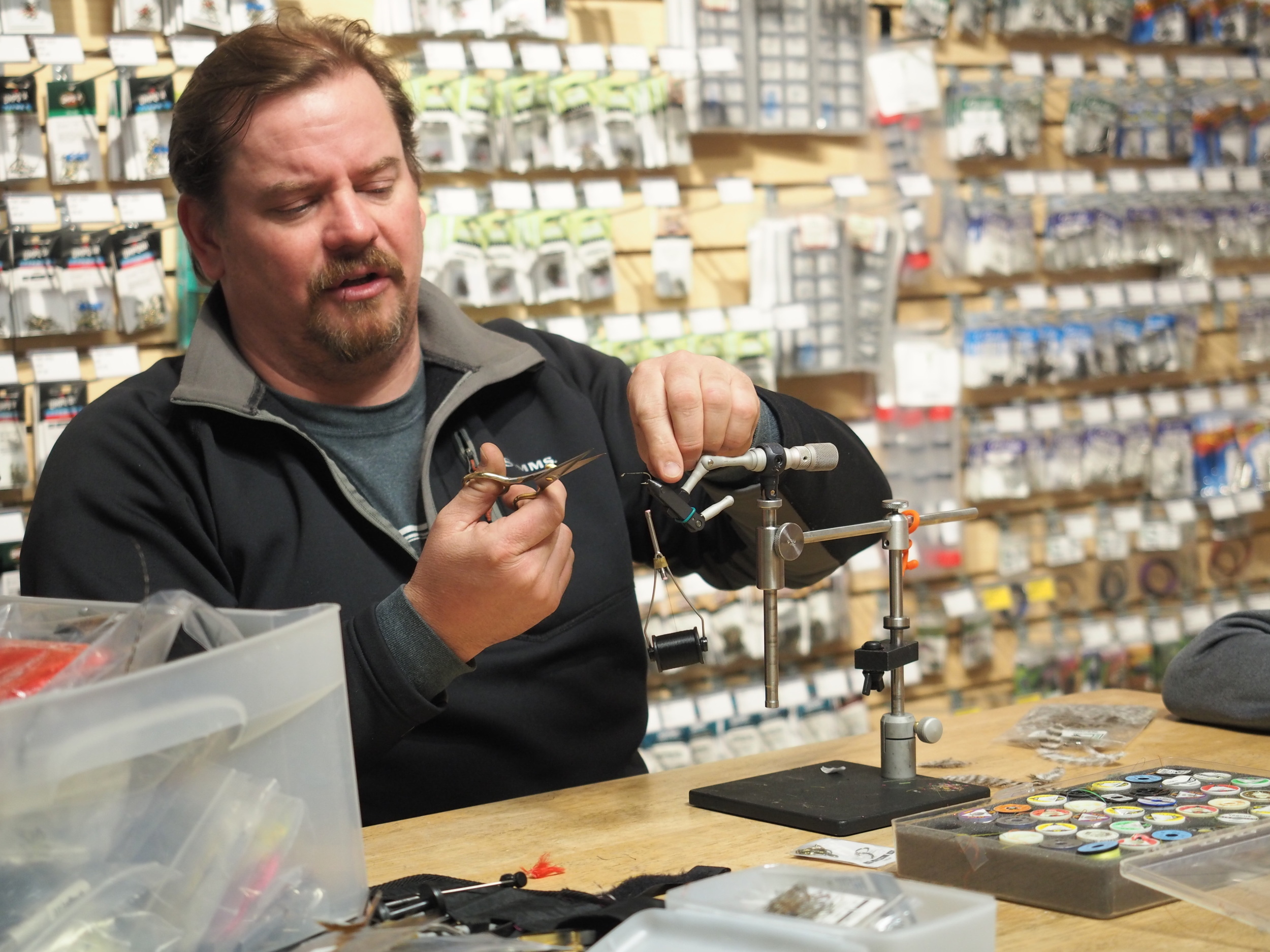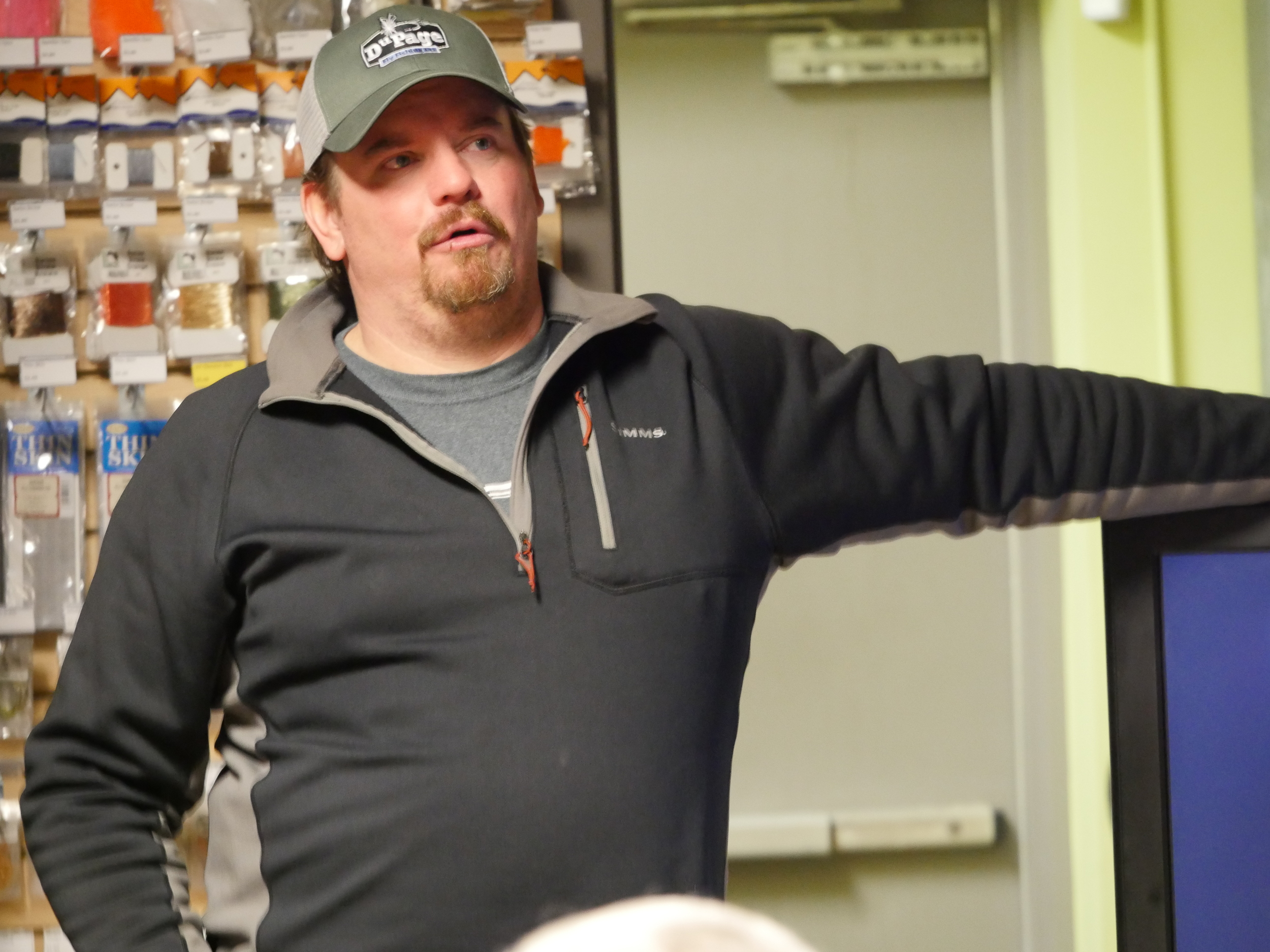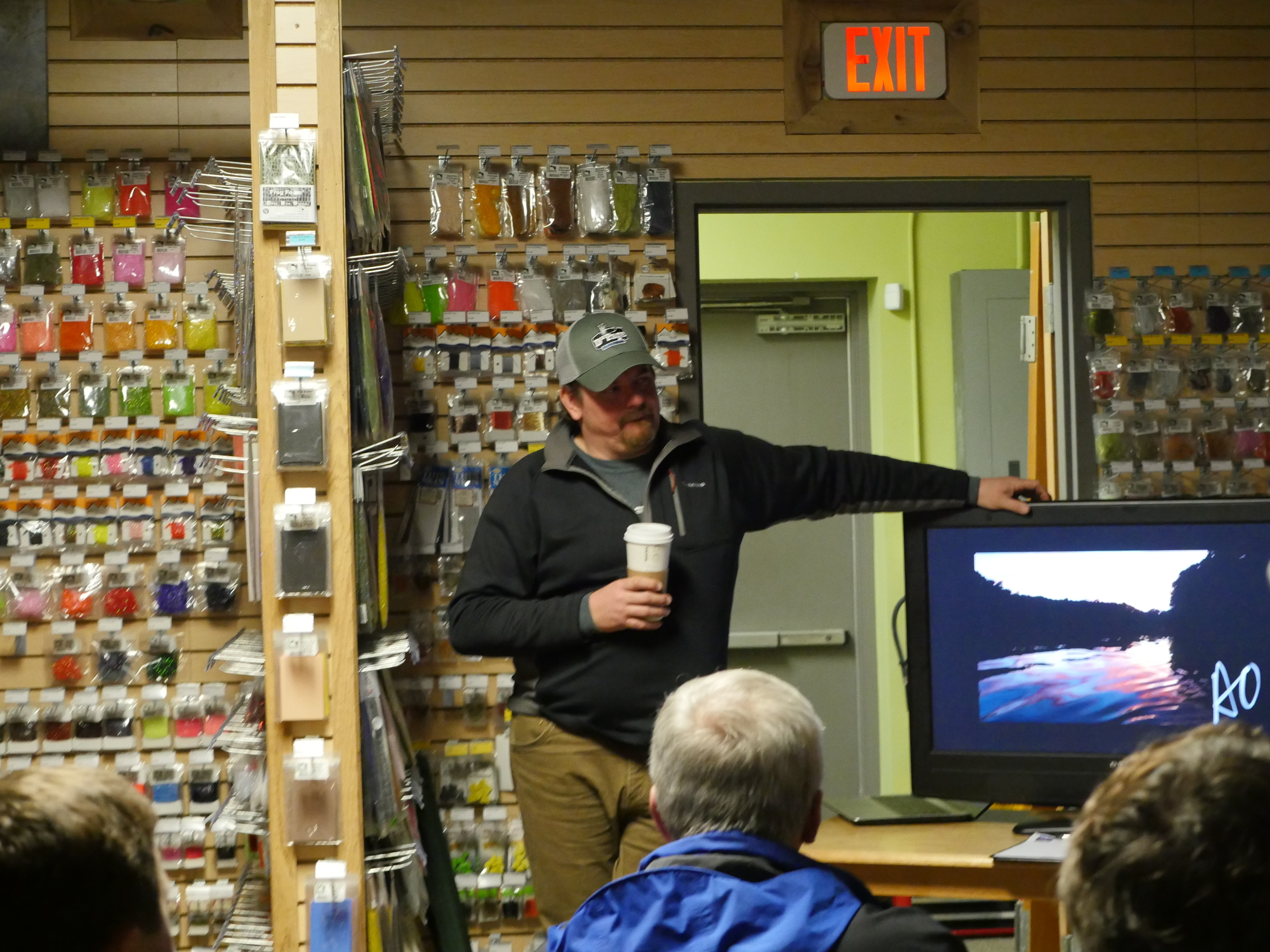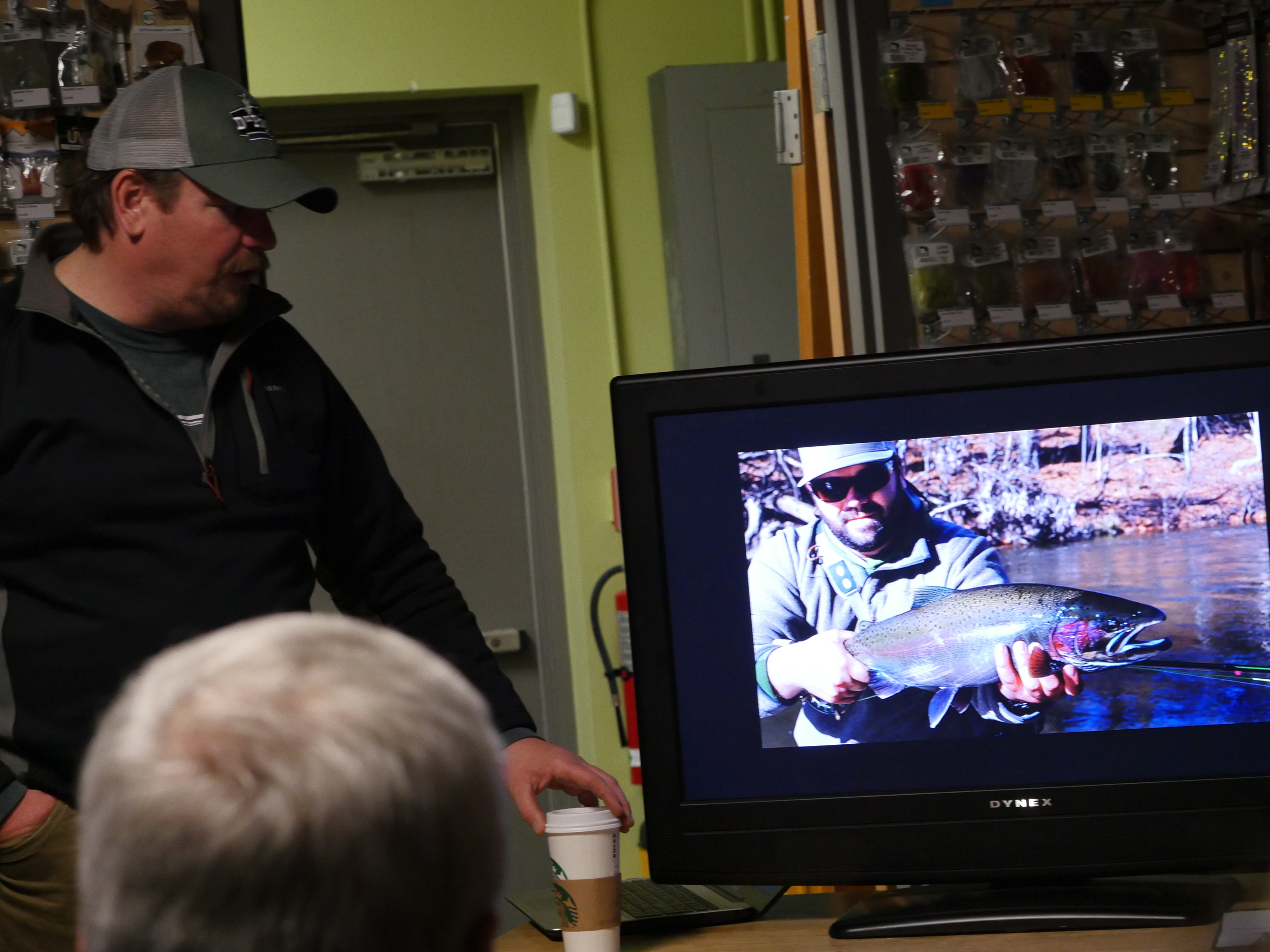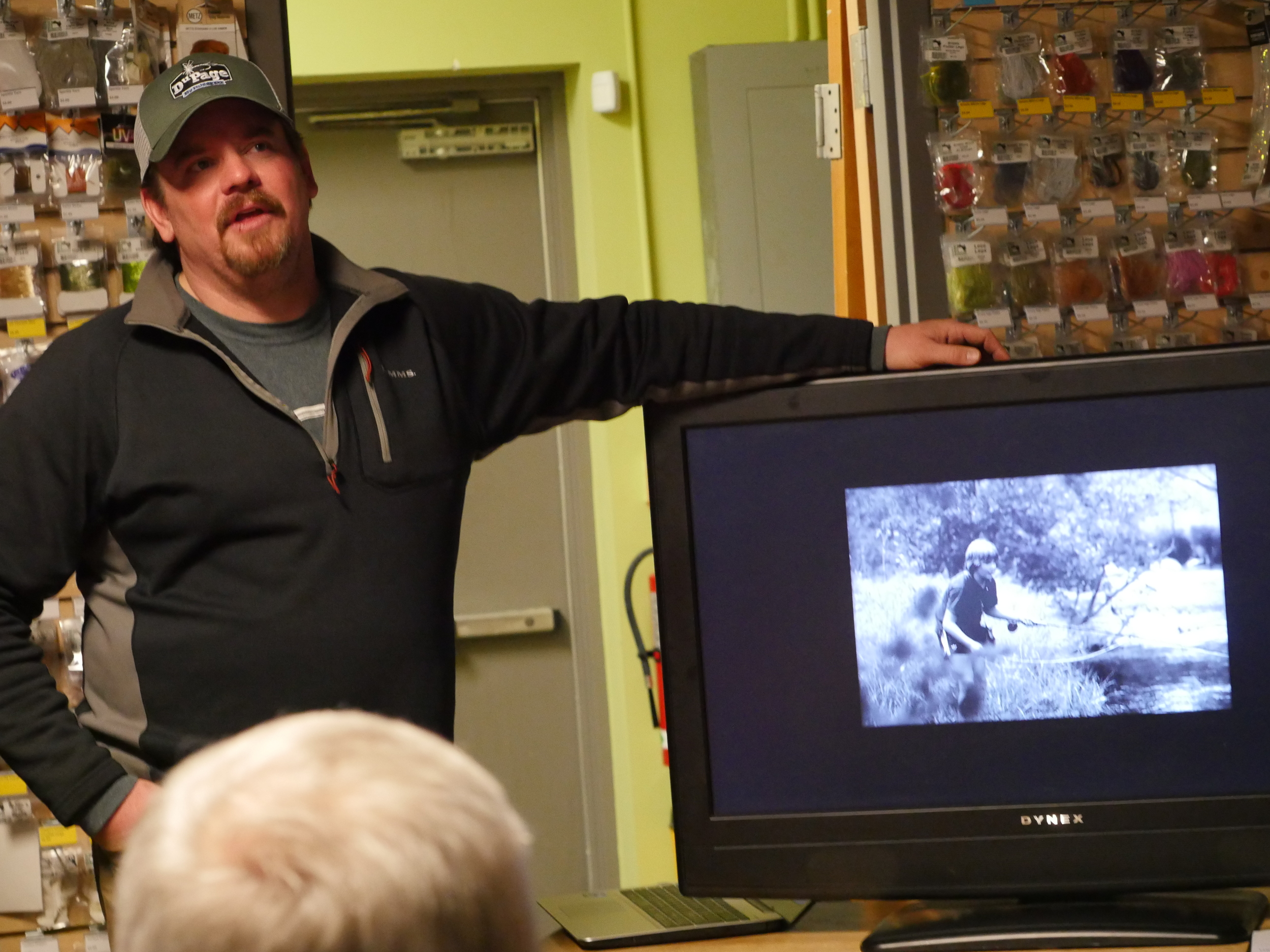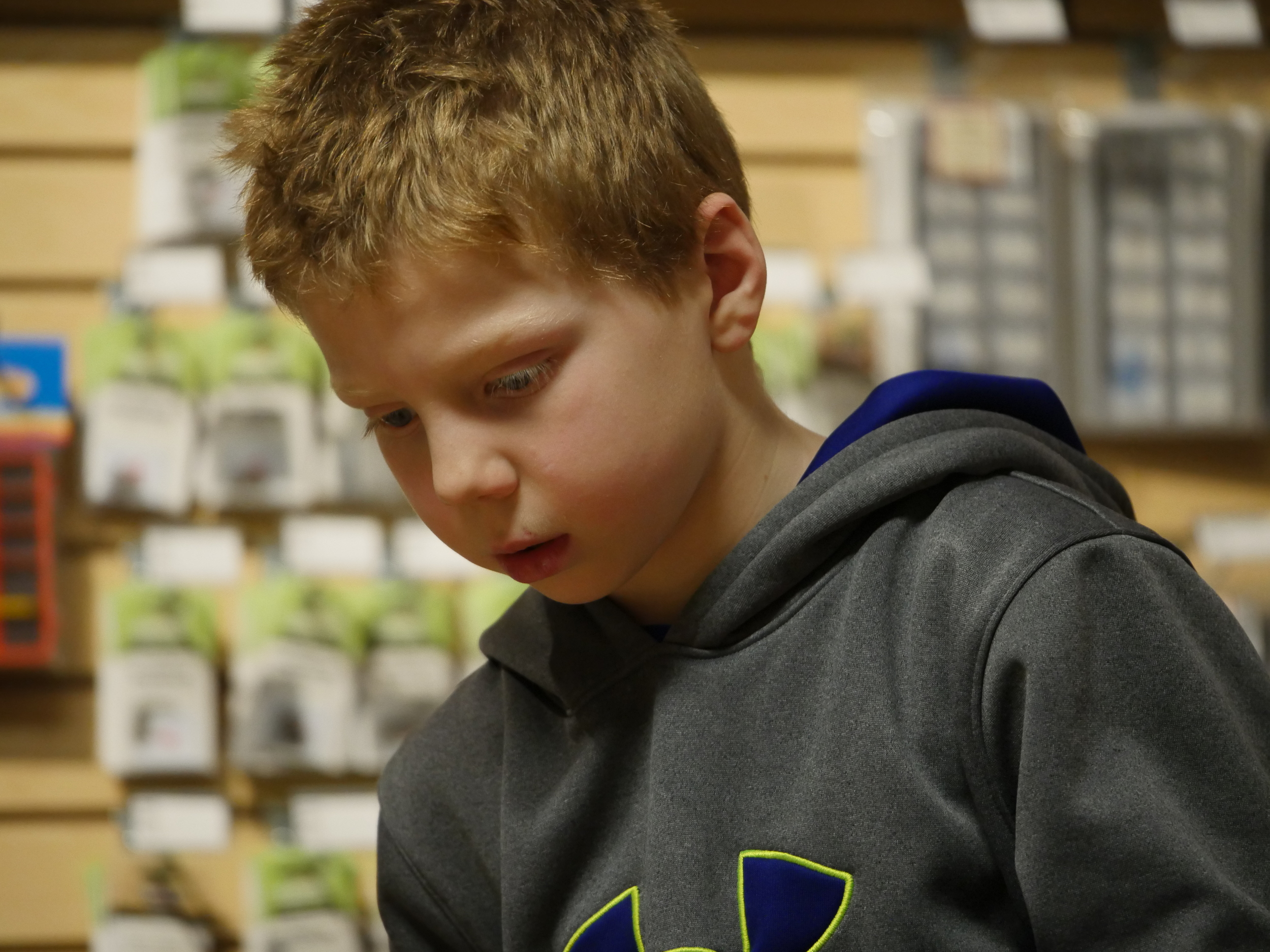GREENS AND STREAMS BLOG
Hotspotting - The reason you didn't catch fish on your guided trip
According to Dictionary.com, the definition of "hot spotting" is "to stop a forest fire". When used as a noun, it's a bit different, and maybe better related to fly fishing; "an area hotter than the surrounding surface, as on the shell of a furnace."
In the fly fishing world, I've been told, it's not good to be labeled a "hot spotter". From my understanding, "hot spotters" direct such an increase in angling pressure to a fishery, there's more than likely a chance that the influx of anglers will push all guides, non guides, and populations of stream side animals, off the water and possibly in to extinction. So as you can see, this is a very serious issue.
Luckily, over the years, no one has ever shared a fishing secret, towns that exude pride in their fisheries have never built monuments as big as factories of the secret fish that inhabit their waters, websites and DNR's around the country haven't published maps to show people where improvements have been made and fish may reside, and most importantly, it's so important, and critical, that no guide has ever published the waters they guide on. These are all key actions to help ensure people stay out of OUR best fishing spots.
Considering none of the above is true - there's more than a handful of fish sculptures as big as buildings, DNR's and private publishers have included maps of improved waters, valleys chock full of streams and stocking spots, and guides post photos and stream reports regularly, so their customers know they've got a good chance of connecting with a beast while out on the water.
What completely boggles my mind, is how someone can accuse another fisherman of being the reason a guide doesn't have a days work, or why someone's customer didn't catch a fish, instead of the reason why, over a new season, thirty more people fished a river, spent $1000/each in town and discovered an amazing fishery that's been, and will continue to be, there for generations longer than any one person will guide or be able to fish it. And even funnier is when they tell you that those people in town don't want that money, and they'll even go as far as threatening harming you, or your belongings, if you visit.
With it being 2016 now, and the age of being offended, it seems that more and more people think they own a piece of water if they see it more than once a year or for a couple of weeks a year, and feel they can tell you what you're doing wrong on their water. When this stretch of water is one of the most well known pieces of water in the world, for a specific species, isn't the fact that people are willing to pay $500/day a key indicator there might be fish there?
So as we venture further in to another year on the water, please keep a few things in mind - if you know about a spot, there a less than 50% chance at least three other people know about it. If you google a type of fish, and a specific fishery comes up on the first page, it's not a secret, its the reason you guide on that piece of water. If you see a photo of a fish on the ground, next to a rod and reel combo, offer some advice, not a public berating. We've all been there at some point in our fishing lives, and in most cases made those same mistakes. Give someone a helping hand, and grow the sport. Don't be one of the d* bags that give our sport a black eye.
The bonefish in the Key's are just awe inspiring!
Jay Anglin Meet and Greet at DuPage Fly Fishing Co.
What works, what has always worked and what I believe will continue to work to keep fly fishing alive is simple, bring guides to the fly shops. It's a symbiotic relationship of the best kind. A guide comes to the shop, takes a seat, ties and then gives a presentation. It's a perfect formula for a bit of success for both businesses.
I think if fly shops disappeared, so too would fly fishing. The rods, the reels, lines and colorful boxes full of flies would be gone and the great tradition, myths and giant pile of wonderful BS would also disappear. So too would guides who teach, develop and carry on the traditions and myths.
So when I went to DuPage Fly Co. to visit with my British buddies, Jeremy and the gang, as well as spend a few bucks, I was also there to support my buddy Jay Anglin. An excellent guide and as they say, "Good Dude."
DuPage regularly hosts a guide in this time honored format. I was at Bob Clouser's shop where he'd host a local guide who'd talk and teach a fly, and out in Seattle at the now closed Kaufmann's fly shop. When I worked at Fly & Field, the guides would come, tie, present, answer questions and book trips. People would also spend a few bucks or two at the shop-a good thing for everyone. Same is true at Coren's Rod and Reel where we invite guides to come and tie and talk about the trips they offer.
The shop had a good turnout. Jay was his usual, with what I'd call his machine-gun stream of consciousness delivery, telling stories and explaining why nymph fishing works on the rivers and streams he fishes and why he believes it catches more fish. And yep, no apologies for the big red bobber on his line.
I remember reading a Dale Carnegie book, "Enthusiasm Makes a Difference" and that's what I like about Jay, here's a guy whose been guiding for over twenty years and I've known him for a good number of them. That enthusiasm for fishing, the desire to put his clients on fish, hasn't diminished from managing a lake where you could catch a trophy bass to rowing down the river to stop and point out where you want to cast and how to handle a bucking, bouncing steelhead.
So add that to a well-stocked fly shop in Naperville and you've got a good way to spend a cold Saturday afternoon. About the only thing that I could think of that would be better would be sitting in the boat with Jay or sitting in the back of DuPage Fly Co, tying flies.
Here's where to find Jay and DuPage Fly Co.
Jay Anglin: http://anglinoutdoors.com
DuPage Fly Co.: http://www.dupagefly.com/
Spey Journey - Part Three - Gandalf Goes Fishing with a Hobbit
Casting with an expert is intimidating. Casting with an expert who is over a foot taller than you is being a student banjo player who was just asked to do a duet with Bela Fleck, or now that’ve you got your first canvas and paints, painting with Picasso. You get the idea, right?
It’s been a bit since I've spent some time with Gandalf, i.e., Doug Taylor, casting a two handed rod. In fact it's been some time since I've spent any time with a two handed rod. Or fishing it seems. Although I did go out with Doug this summer a couple of times with either a switch rod or a single handed rod and we tangled with some smallmouth bass.
But now, here we were, at the place where I believe two handed rods belonged, casting for big fish in bigger waters throwing sinking lines, making mends and drifting big flies. It started simply enough.
"So mate, you want to go steelheading fishing on the St. Joe?"
I lied to the wife and work in order to go, the sign of true addiction.
"Meet me at Cabela's at 6:30, you bring the sandwiches for lunch."
My normal day starts at 4:30am with a trip to the YMCA and so there was no change in the routine except for a trip to Indiana and a hop over to Walmart to get a license, trout stamp and lunch. By the way if you do fish with Doug, he likes chocolate bars and cookies as well as beef sandwiches. So don't forget to feed the guide. I got everything we needed and headed for Cabela’s.
So far, everything is going quite fine. I saw Doug and boat pull into Cabela's parking lot, we loaded gear and food and headed for South Bend and the St. Joe, about an hour away.
Doug is a great traveling companion, we have similar shared experiences, both us having served time in the military and both carrying some of that aftermath that war brings but we deal with it with humor and stories. And perhaps cookies, it seems that we share similar addictions as well.
For me fishing isn't always about the need to catch fish, nor make the perfect cast, it's about what happens on the trip. With Doug, there's always a walk, two guys gimping along, peering into the water trying to unlock its secrets while admiring its beauty.
I had never fished the St. Joe before, and so a part of me thought it was probably a bit more industrial looking, but it’s none of that, it’s clean and clear with a very long walking path along side of it. Sections of it are quite wide and deep and there’s plenty of current breaks and pools where fish might or might not be found.
There is a lot of nice things to say about the St. Joe but this is about Spey casting.
So we put the boat in at a well maintained boat launch and since I'm sworn to secrecy, we went up or down river.
So far, I was having a great time till Doug handed me a rod.
"Okay mate, here's the front of the boat cast," he said and brought the line upwards, like a snap T and then made a perfect roll cast that sailed exactly where he wanted it and then he did it several times in a row. "Now you cast.”
If you were to call Doug, I'm certain that he'd say he was sorry he said those three words. So for the next half hour I struggled to make a decent cast and would continue to struggle for the rest of this trip and the next. So much so that Doug has suggested that perhaps I should bring a single handed rod along on our next trip. At least he’s brave enough to invite me back-it’s probably because of the cookies.
But a journey without meeting obstacles isn't really a journey, it's a pleasure cruise.
So what caused my casting to fail?
Good question...to which I know the answer.
It's a number of things: failure to practice, a nasty sore shoulder (swim five miles a week and your shoulders tend to get a bit iffy at times), a bit of worrying about whacking the boat or Doug, a bit of memory failure (muscle and gray matter), and that first thing, intimidation. So put them all together, put them in a boat and watch my casting go right down the toilet.
Failure is an option and a step towards learning. Even a simple overhead cast eluded me both trips.
I was neither too tired nor too sore, I was simply frustrated and the more frustrated I got the worse my casting went. Once upon a time, I would simply close it all out, trust what I'd been taught, close out the clatter in my brain and let the muscles do their job and things would go in the right direction. Not this time, not the next time. Both times in the boat, nothing but one bad cast after another, after another. Blown anchors, bad line placement, and a complete inability to put the fly where it needed to go. Couldn't even mend the line. Tied bad knots, put a fly or three into trees and if I'd of fallen out of the boat, it would have completed my last two trips.
And yet, both times, I caught and landed fish.
So failure in casting was not a failure in fishing and I did hear these words, once or twice, "Good cast there mate, now repeat what you just did." Yep, like that was going to happen. My memory shorted out after every cast, and so after a good cast, a rare good cast came after a flurry of bad casts.
There is something in two handed rods that makes them a challenge, the first is what to do with the left hand and the second is that while the action is slower, most of it occurs behind you but what's important is what's in front of you. Sound confusing, yep. Because the anchor-that part of the fly and line that has to be in the water to anchor the cast has to be in the right place to make a good cast. But the back cast, where the line has to form a "D" loop in order to make a good cast, is as much a feeling as loading the rod is in single handed casting. But it's trickier. If you think going ten to two was difficult, a Spey rod behaves far differently and you're moving two hands and trying to make a smooth transition so that the cast goes high and not crashing on the water and also, in the right direction-right down the tracks.
Yep, frustrating.
But you can't blame the instructor, oh sure, I’d like to say, "Hey Doug, let's cut both of your legs off, drug you and tie one hand behind your back, or how about a shorter line, shorter rod, something for a hobbit, you know, a single handed rod.” Doug is a good instructor, and at this moment, I’m a crappy student who hasn’t practiced.
All the good fly casters I know, practice. In the summer I've been known to go out at lunch and practice till whatever kink I have in my casting is worked out.
I sort of have a set of rules for practice that I try to follow, and if you’re interested in reading further here they are:
1.) Duration: About an hour - after an hour you tend to lose focus, so do it for just an hour. After all, this should be fun, not tiring and frustrating. Try to practice at least three to four times a week, more if you have the time and inclination.
2.) Timing: When are you most awake, have the most energy? It’s best to practice when you’re at you’re best not when you’re already tired and feeling a bit run down. Do it when you’re feeling good.
3.) Goals: Break the cast down, what do you want to practice, what part of the cast do you want to work on? Write it down somewhere and set a goal such as keeping the anchor where it belongs, keeping the the left hand position, bringing the rod up vertically and so on. Break the cast down into parts and set a goal to learn each part and when you have the parts down, work on the whole cast. A Spey cast is a series of moves. Each cast be it a single Spey, double Spey, Snap T and so on are a series of moves that require precise timing. So don’t try and practice all the variations at a time. Pick one and work on it. Remember, you won’t master Spey casting in an hour, or fifty hours, it’s going to take a year or so before you’re making good clean casts. Doug has a lot of years in and a lot of practice.
4.) Smarter, not harder: It’s easy to over analyze the problem and then try over and over to make it work by practicing harder or throwing the rod harder. But the best thing to do is stop practicing, look at the problem and see if there is a different way to solve it, a different technique or approach. Don’t keep making the same bad cast over and over.
5.) Solve the problem: Define, analyze and come up with a solution. Test the ideas, monitor them to see what works and then implement them into your practice.
Also, fishing is not the best time to practice your cast. Build a grass leader and head out to the back yard or park with the long rod and practice those elements of the Spey cast. When you get on water, it might be best not to throw a long rod. But if you want to get some practice in, ask your guide to pull the boat into an area where you can make few casts and see what works. A simple roll cast might be the ticket. And if you get frustrated or tired or whatever, grab your single handed rod and cast away.
Spey casting to me is difficult, not because of single handed casting but because it's not single handed. It's new, I’m not young, my muscles are not adapting like they should, and my reflexes aren't what they were and mostly because I haven't practiced.
Doug practices, I bet Simon Gawesworth of Rio, practices, and so does Andy Murray and all good two handed casters.
So part three of this journey is Gandalf talking to the hobbit and saying, "Look mate, it's time for you to pick it up, you know the rules, and I’ve seen you make good casts..."
And my favorite, "It ain’t easy is it mate?"
Nope, learning something new never is, not practicing it makes it even worse.
But if you catch a steelhead on a lousy cast and it beats the hell out of you then you have to thank the guide for getting you in good water. But if you catch one on a perfect cast with a perfect drift, then you can be glad that you put in the hours, and when Gandalf says, “Good job mate, really good job,” you feel like the Spey gods have smiled on you.
Stuart Van Dorn
